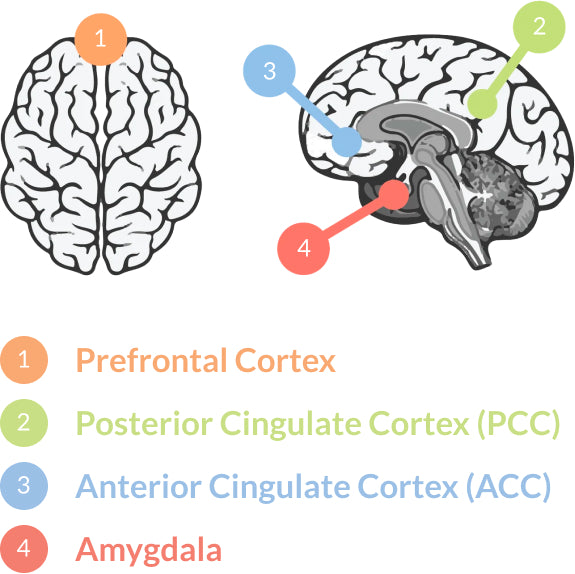Why Mindfulness
Mindfulness and the Brain
Research shows that some parts of the brain are inactivated when we are stressed. The Amygdala, a very old region of the brain associated with fear and negative emotions, takes over.
Mindfulness practice can help us overcome stress and anxiety. Studies show that mindfulness decouples the Amygdala from the Anterior Cingulate Cortex, which processes conflict and ongoing states. In other words, it helps us reduce the effects of stress and manage our thoughts and emotions.
Mindfulness can also improve our ability to focus, reason clearly, and self-regulate. MRIs have shown that mindfulness can activate the Prefrontal Cortex, which regulates thoughts. It also activates the Posterior Cingulate Cortex, which regulates mind-wandering, self-referential thought processes, and memory recollection.

How Mindfulness Helps in School Settings
Bringing Mindfulness to Schools
Calm Classroom provides practical mindfulness-based tools to help us manage stress and achieve emotional well-being throughout the day. Our practices help both students and educators feel focused, relaxed, energized, and empowered.
Calm Classroom Mindfulness Program Results
-
92% say their students are calmer and more peaceful after practicing Calm Classroom.
-
83% say their students are better able to regulate emotions.
-
89% say their students are more engaged and learning-ready after practicing.
-
86% say their students enjoy practicing Calm Classroom.
-
78% experience a reduction in stress and anxiety.
-
83% feel more aware of their thoughts and emotions.
-
84% feel more physically relaxed.
-
92% feel that Calm Classroom is effective.
View Our Teacher Survey Results
Calm Classroom offers a positive, proactive approach to supporting mental health and boosting engagement for students and teachers. Download one of our teacher survey reports to see the impact of Calm Classroom!
Complete the form to see the results:

